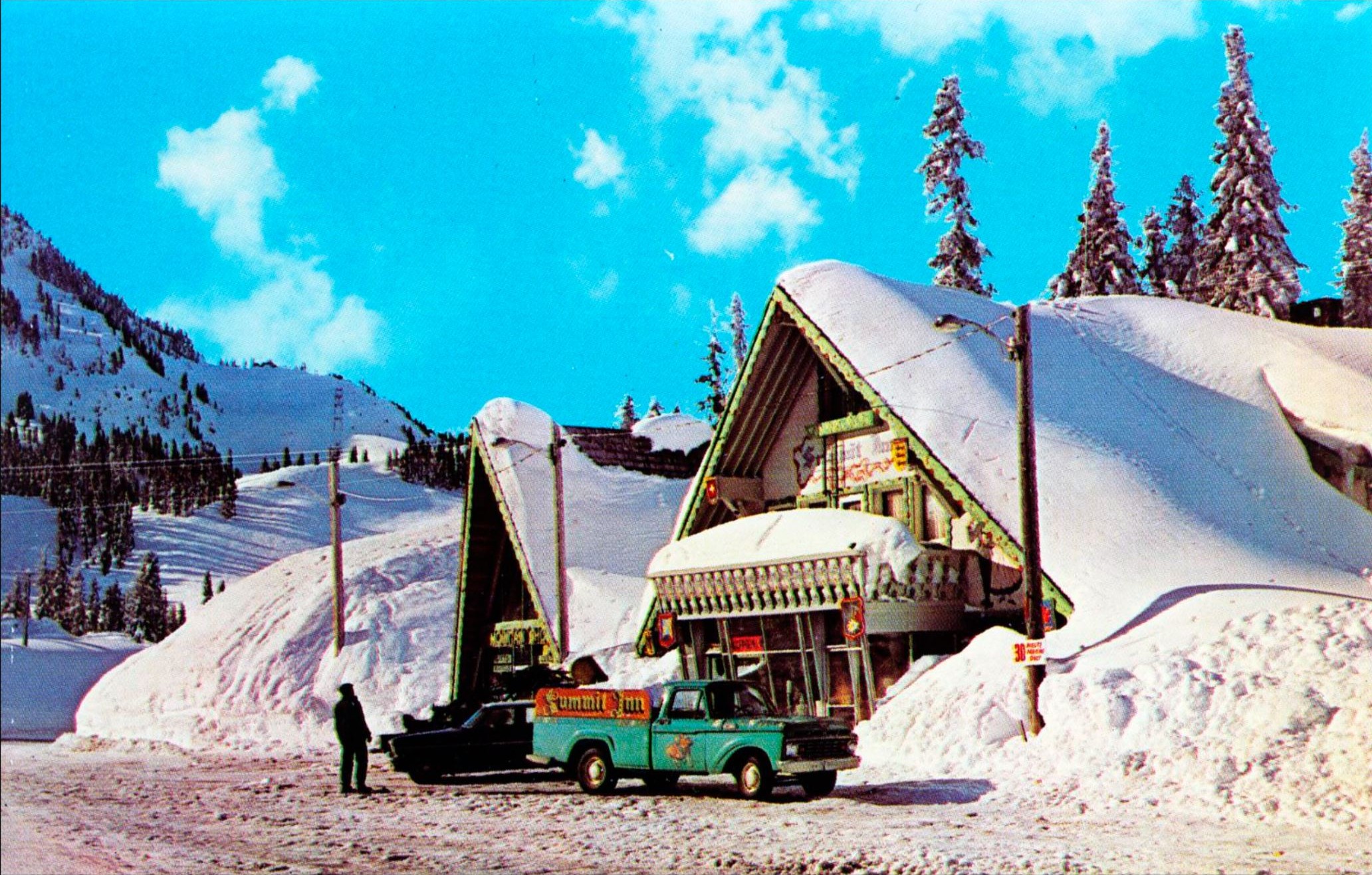mm 2464.4 As you pass under the Jupiter Express chairlift, and see the Southern Cross chairlift ahead of you, you might be interested in how a ski resort came to be at Stevens Pass.
The first downhill ski area was just outside of Leavenworth, but crosscountry skiers were making their way to Stevens Pass early on when road conditions allowed it.
In 1924 the USFS identified the need of a gas station, store, and campgrounds at Scenic for travelers, and pinpointed recommended locations. That same year Jake F. Beattiger constructed a service station and store for the cost of $755. In 1929 he added rental cabins. In 1931 he built a power plant on the Tye River, and in 1937 a water system for his own use. The collection of small structures was known as Beattiger's Resort. In 1950 Beattiger built the Summit Inn and operated it until it burned to the ground in 1969. The store and gas station were demolished in the early 1970s.
Magnus Bakke and Walter Anderson were leaders of the effort to develop Stevens Pass into a ski area, working with the Wenatchee National Forest, the Wenatchee Chamber of Commerce and the Everett Chamber of Commerce. In 1936 the Stevens Pass Recreation Association purchased 121 aces of land-grant property from the Northern Pacific Railroad and gave it to the USFS for a ski area.
Don Adams and Bruce Kehr, the original on-site owners and operators, logged a run in the second-growth forest and installed a rope tow powered by a ford V-8 engine. The tow opened the winter of 1937-38, but the road was not kept plowed so revenue did not even cover the insurance cost that first year.
Adams and his bride, Blanche, honeymooned at Stevens Pass despite rough winter weather. Kehr's wife Virginia, learned to ski and eventually became one of Washington's best powder skiers. Construction of a 30' x 80' ski hut was started in 1937. It was designed by the USFS and CCC labor was used. It opened December 4th, 1938 Starting in the fall of 1938 the road east from Stevens Pass was kept plowed. Skiers from the west would take the train through the tunnel to Berne, then catch a shuttle up to the pass. Experienced backcountry skiers were able to ski the Mill Creek valley all the way back to Berne. The ski area was seeing an average of 500 people on a weekend day.
Sadly, the ski hut burned down only a year and a month after it opened. Money was raised and the CCC built a new lodge in the same spot. It opened December 1940 and still stands today.
During WWII both Adams and Kehr went to war, and their wives ran the ski area with some help. The Military considered recreation essential so provided gas to operate the rope tows, kept the road east from the pass plowed, and sent peronnel to the area for R&R. In the 1940's many local clubs built their own lodges at the pass. The Mountaineer’s lodge was completed in 1948. Between 1940 and 1947 the Stevens Pass Company built nine rope tows and added a ski shop with rentals, operated by concessionaires Osborn & Ulland.
The company had taped into Beauttiger's power plant on the Tye River until the Chelan PUD ran power to Stevens Pass in 1955, also the first year they offered night skiing.
In 1936 the first chairlift opened at Sun Valley, Idaho. Adams and Kehr traveled to Sun Valley to see the chairlift. It operated on rubber tired wheels made by Riblet Tramway of Spokane. They had built a limestone tram for the Portland Cement Company, ore trams for mines, and a prototype chairlift at Mt Hood. Adams and Kehr had Riblet design, but not build, a double chairlift for Stevens Pass. They hired their own labor to construct it. The Barrier chairlift opened in 1953. Over the next 23 years they replaced all the rope tows with seven chairlifts.
The railroad was such an efficient form of travel, the highway over Stevens Pass was not completed until 1951. In 1963 the highway became US-2.
Ownership of the resort changed in 2011, again in 2016, and in 2018 Vail Resorts purchased it.
The Store at Scenic
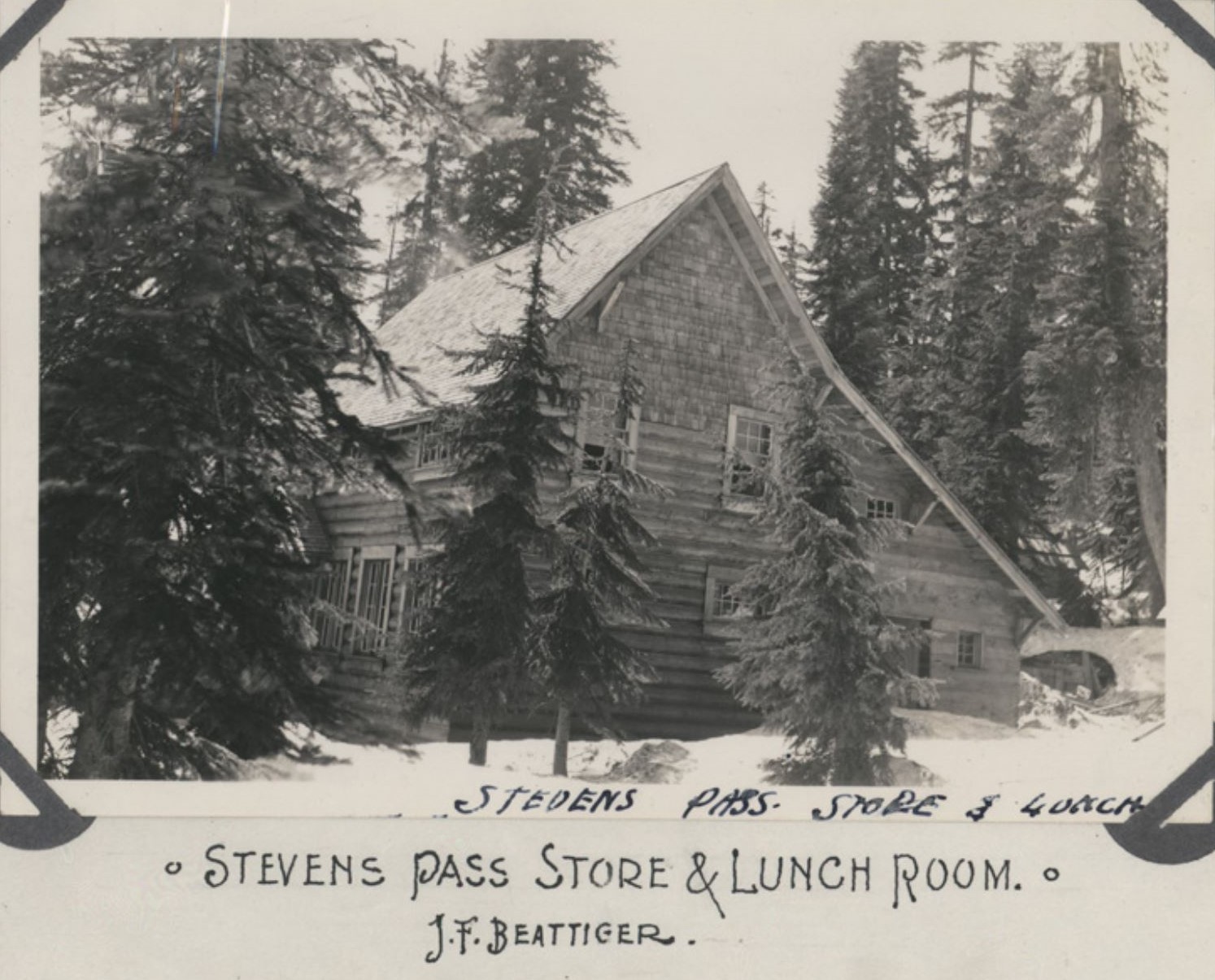
The first gas station
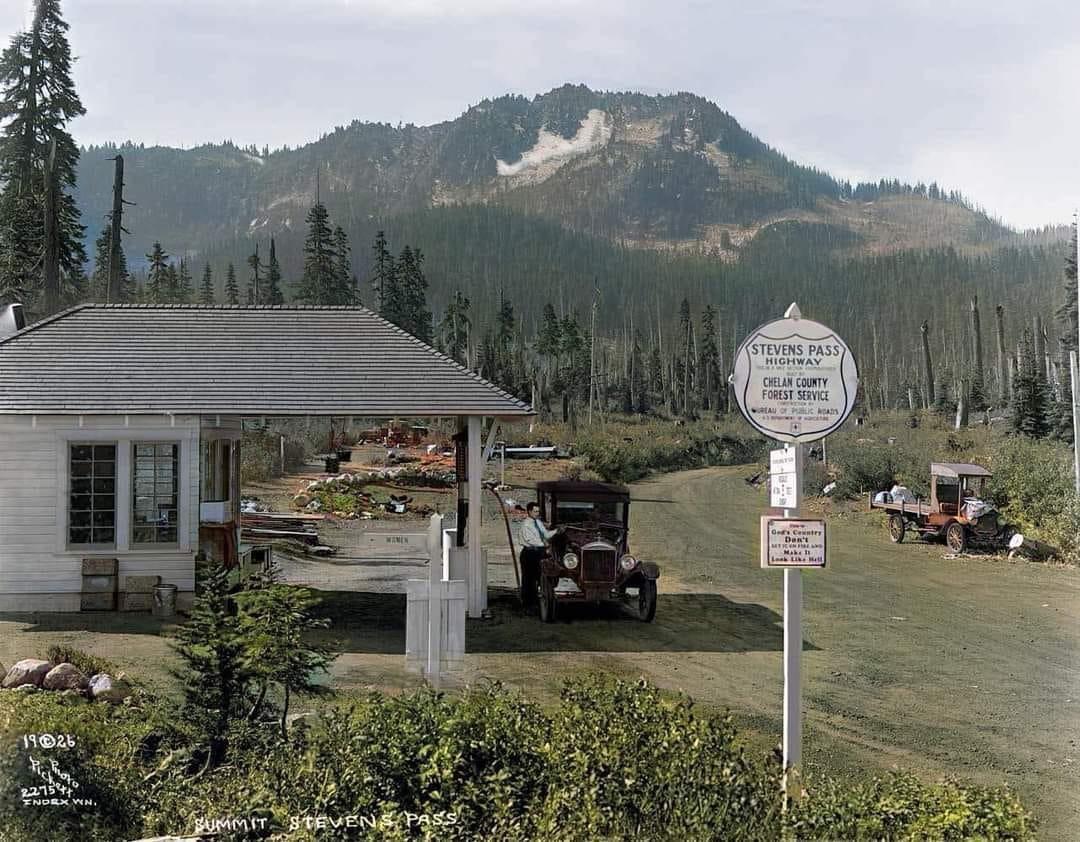
description
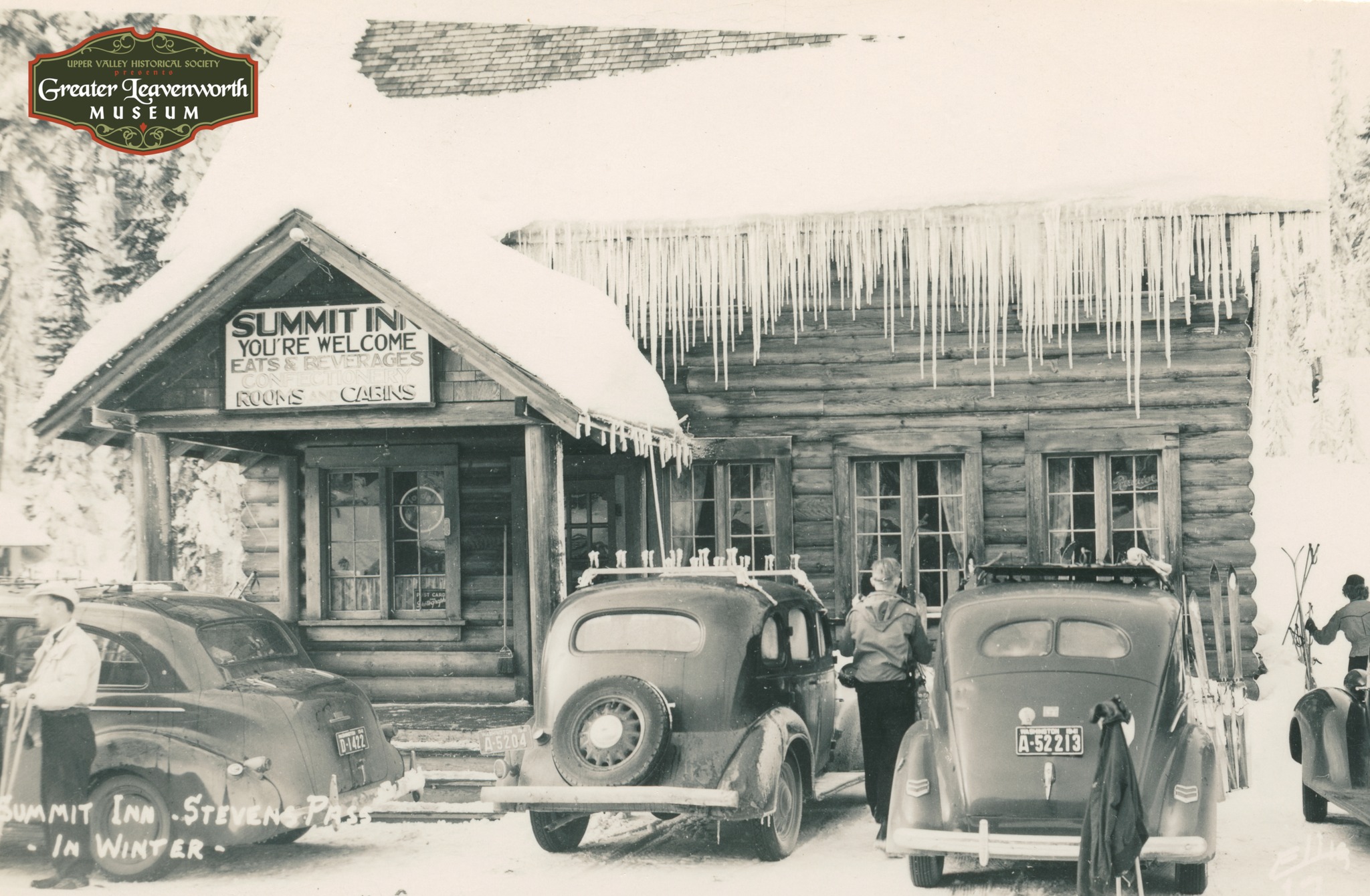
description
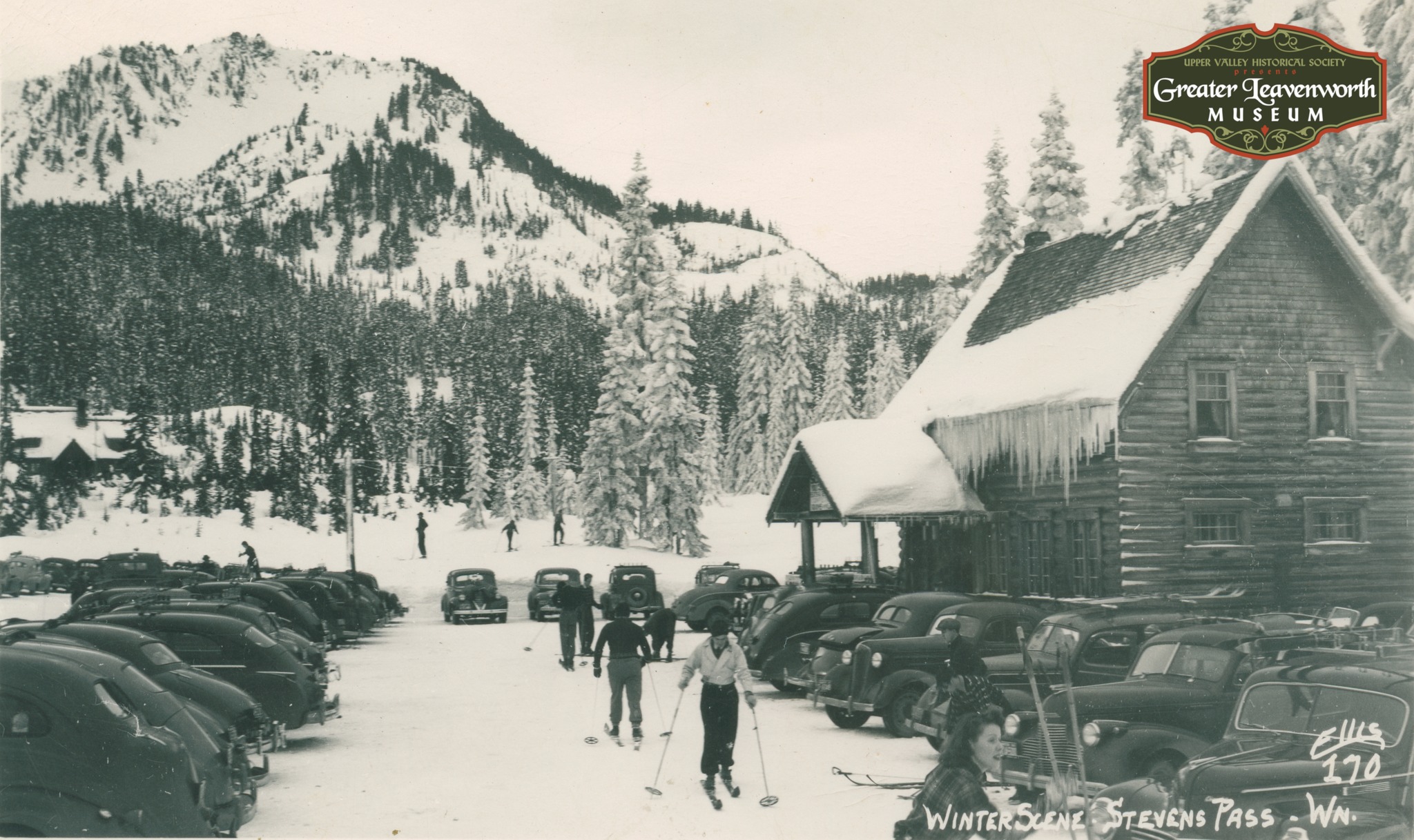
description
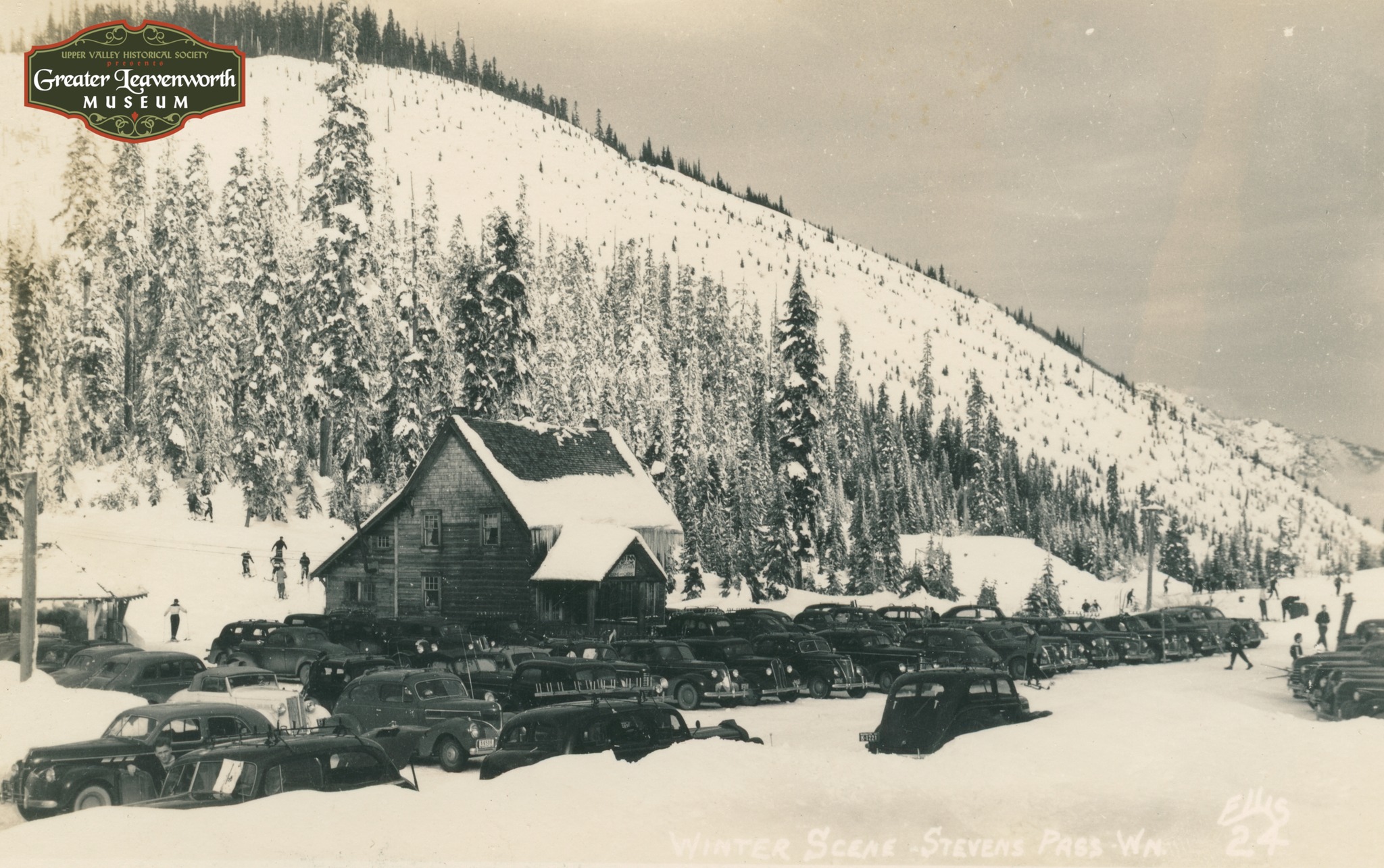
T-bar, 1940's. Where the Skyline chair is today.
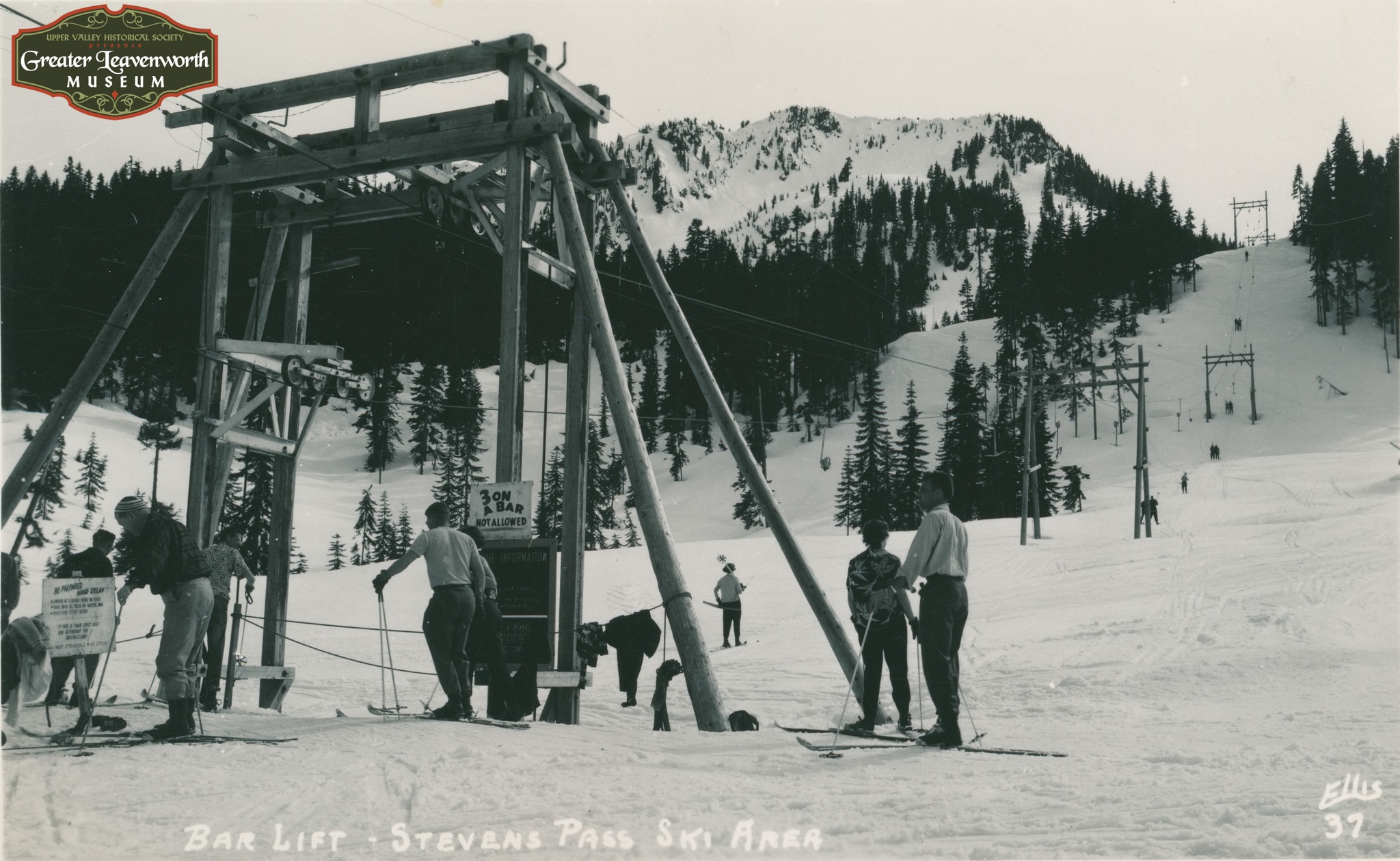
Looking south, the pass just out of frame to the left.
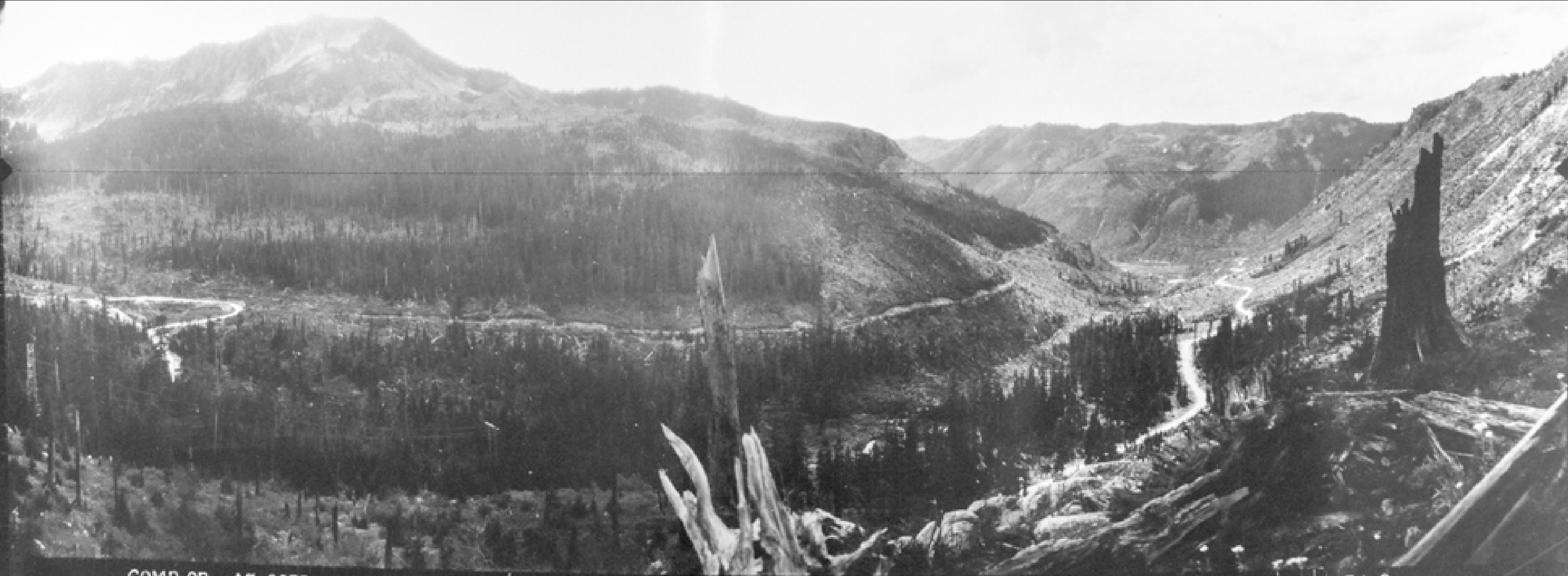
description
